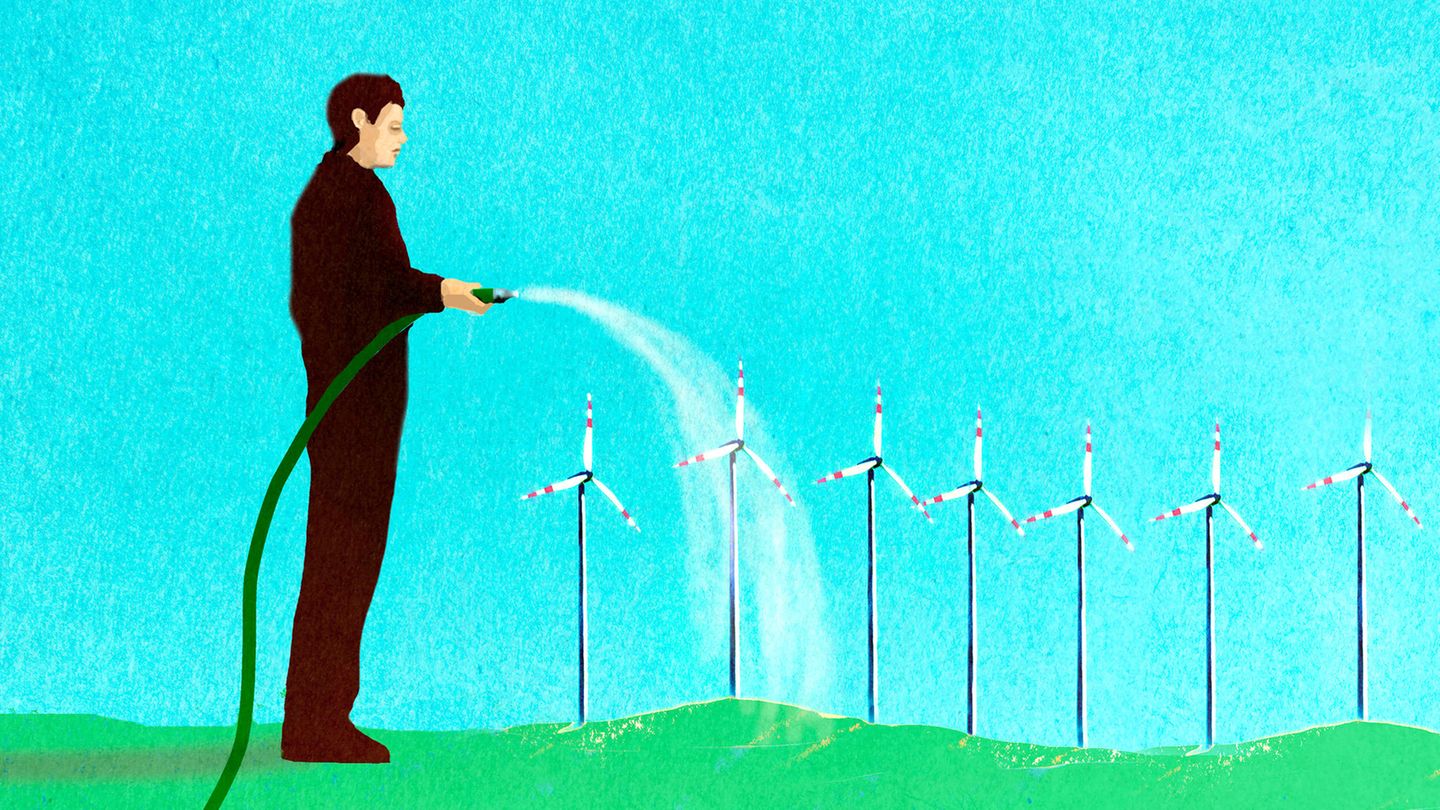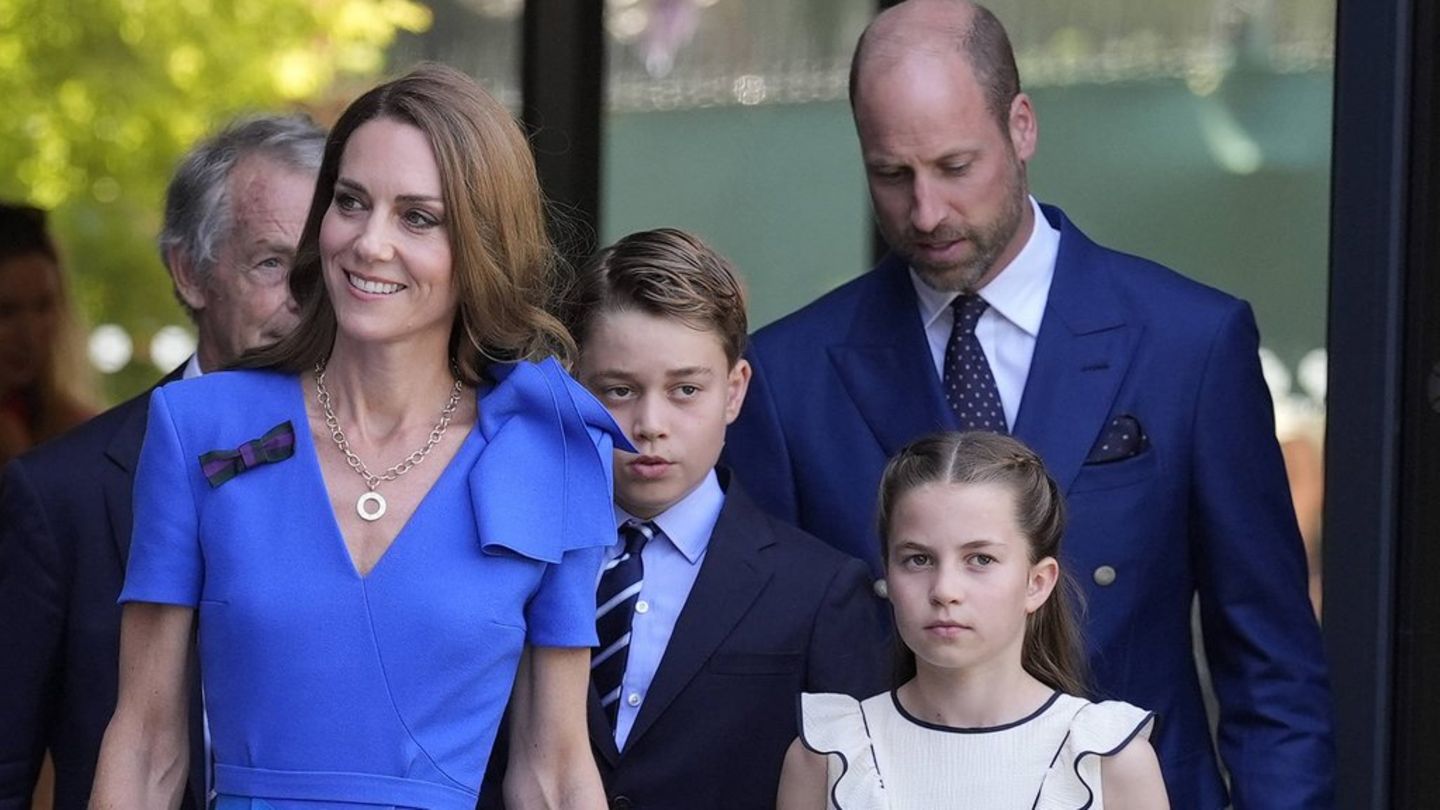What distinguishes climate protection from nature conservation? One is about the fight against man-made global warming. The other is about protecting ecosystems. Both must be implemented together, explains the author and Green Party politician Jan-Niclas Gesenhues.
Climate protection is on everyone’s lips, but hardly anyone talks about nature conservation. Even worse: the two are played off against each other, says Jan-Niclas Gesenhues, a former conservationist and now parliamentary state secretary in the Ministry of the Environment. That has to change, he says in an interview with Stern. He wrote a book about why. “Offensive climate protection” is a plea for that environmental Protection in times when climate protection seems to be above all else. And it is also a bit of a reckoning with his own party, whose focus has shifted due to wars and the energy crisis. The Green politician is convinced that climate protection can only succeed if we protect our environment.
In your book you criticize the fact that environmental and climate protection are being played off against each other. Why, Mr. Gesenhues?
An incredible amount has been achieved in climate protection, but the ecological crisis is more than that. Nature conservation has recently received little attention in the public eye. This is unfortunate because we are witnessing dramatic extinctions of species, ecosystems are collapsing and the environment is becoming more polluted. In Germany alone, over 90 percent of moors and wetlands have been destroyed. This causes an additional 50 million tonnes of CO2 to be released every year. We will therefore never achieve our climate goals through technical solutions alone; we need moors, forests and floodplains to store CO2. The energy crisis and populist campaigns are denigrating environmental and nature conservation as brakes. This is dangerous. Because nature is the foundation of our prosperity.
You have to explain that.
The European Central Bank recently published a study on the dependence of the euro area economy on nature and the environment. 70 percent of companies depend on nature’s services. According to the World Economic Forum, ecological crises are among the top five greatest risks to our economy over the next decade. Therefore, climate protection and nature conservation must be given equal priority on the political agenda. Investments in our nature are always investments in our prosperity.
They are Environment– or climate protectors?
You can only be both at the same time. Nature conservation is impossible without climate protection. The same applies vice versa.
How has this been implemented politically so far?
In the case of offshore wind energy, for example, operators have to pay a contribution for marine nature conservation. So far, a three-digit million sum has been raised for our oceans. When expanding wind energy, there are targeted aid programs to protect certain bird species. In the solar package, we have provided financial incentives to combine solar expansion with nature conservation projects. These are good approaches that we must expand and complement, leading to a comprehensive offensive to save nature. We have to think about climate and environmental protection together and take it seriously.
Habeck has recently taken the Russian war of aggression seriously. It was sometimes difficult to support the flag Climate protection to hold up.
We had an acute energy crisis and had to act quickly. We have massively expanded renewables, got through the energy crisis in a stable manner and at the same time made big steps forward in climate protection. Robert Habeck made a decisive contribution to this. And yes, nature conservation has also made a significant contribution to enabling the acceleration of the expansion of renewables. Now it is important to put nature and climate protection together at the top of the political agenda. But I expect that from all parties. Nature conservation cannot only be an issue for one party. The ecological crisis is too big for that.
Without the pressure from civil society, we would never have achieved many milestones for environmental and climate protection.
The fact that the climate protection law has now been weakened does not fit into this picture. Why did the Greens give up without a fight?
That was a compromise with our coalition partners.
Do we still have time for compromises?
With many concrete measures for climate protection, we have initiated more than any other coalition before. This is also the result of negotiations and compromises, without which a democracy cannot function.
Nevertheless, the new climate protection law is window dressing. Sectors with high emissions have no incentive to reduce them because the values are offset against the lower ones from other areas.
The federal government has it managed to ensure that the 2030 climate target is achievable again. Even if the transport sector is clearly lagging behind. We are getting a lot of things underway, but it takes a broad social movement, not just for climate protection, but also for environmental and nature conservation.
© BMUV / Sascha Hilgers
To person
Equipped with cookies and warm cocoa, Jan-Niclas Gesenhues roamed the moors and forests around Emsdetten near Münster as a little boy with his grandfather. This is how the Green politician describes it in his first book, “Offensive Nature Conservation”. Most visited: The Emsdettener Venn raised moor, whose extensive moor landscapes fascinated him. “Back then I understood the value of our nature and that’s why I joined environmental associations as a child,” he remembers in an interview with star. Gesenhues was, among other things, a Nabu member, received his doctorate in international environmental and energy policy and has been working as Parliamentary State Secretary in the Ministry of the Environment since February 2024.
Your trust in civil society is with all honor, but also the climate activists could not prevent the climate protection law from being watered down. The environmental movement would not be immune from this either.
Without the pressure from a strong civil society, we would never have achieved many milestones for environmental and climate protection. Of course, some in civil society are demanding even more. And that is exactly what is important so that politics continues to be driven forward and regulations at the expense of nature are prevented.
In Brandenburg, where the Greens also govern, this didn’t work so well. The state is drier than any other region in Germany – yet the Tesla factory was approved there.
The authorities in the region carry out the legal and technical assessment of water availability. Fundamentally, protecting our groundwater is a major challenge. In the past 20 years, we in Germany have lost as much water as can fit into Lake Constance. We therefore urgently need to use our water resources more sustainably. With the adoption of the National Water Strategy by the Federal Government, we have taken a very important step forward.
What are you thinking about?
The best water saving program is to phase out nuclear power and coal – these industries need an enormous amount of water. We also need to take targeted precautions about how water can be used in times of drought. Because of climate change, this will become an increasingly pressing issue in the coming years and decades. In order to raise awareness of the consequences of the climate crisis and the necessary adaptations, I promote commitment to environmental and nature conservation, especially among younger people.
Why is nature conservation running out of offspring?
The generational change is definitely a major challenge for the environmental movement and the environmental authorities. I would like to help inspire more young people to get involved and pursue a career in nature conservation. The climate protection movement has shown how it can work. It has motivated millions of young people to preserve our livelihoods.
We need them all: public figures and nerds.
What have Fridays for Future, the Last Generation and Co. done differently, perhaps even better?
Well, these two movements are very different… Fridays for Future have shown strong campaigning ability; they do not promote long-term commitment, but rather offer activist formats. They are diverse, open and broad-based. They are also very much about global climate justice and saving the world. The climate movement is driven by younger people, especially women. All of this appeals to younger people.
Are there also icons among environmentalists like Greta Thunberg or Luisa Neubauer?
At least those that could become one. There are real nature conservation influencers in nature conservation organizations and also on social media who reach a lot of people with their content. We need them all: people who are capable of activism and people who have been mapping farm birds for decades, public figures and nerds, old and young. But so far there is not one figurehead, but rather many committed people, especially in the associations. Who knows, maybe the Luisa Neubauer of nature conservation is already there.
Source: Stern
I have been working in the news industry for over 6 years, first as a reporter and now as an editor. I have covered politics extensively, and my work has appeared in major newspapers and online news outlets around the world. In addition to my writing, I also contribute regularly to 24 Hours World.




